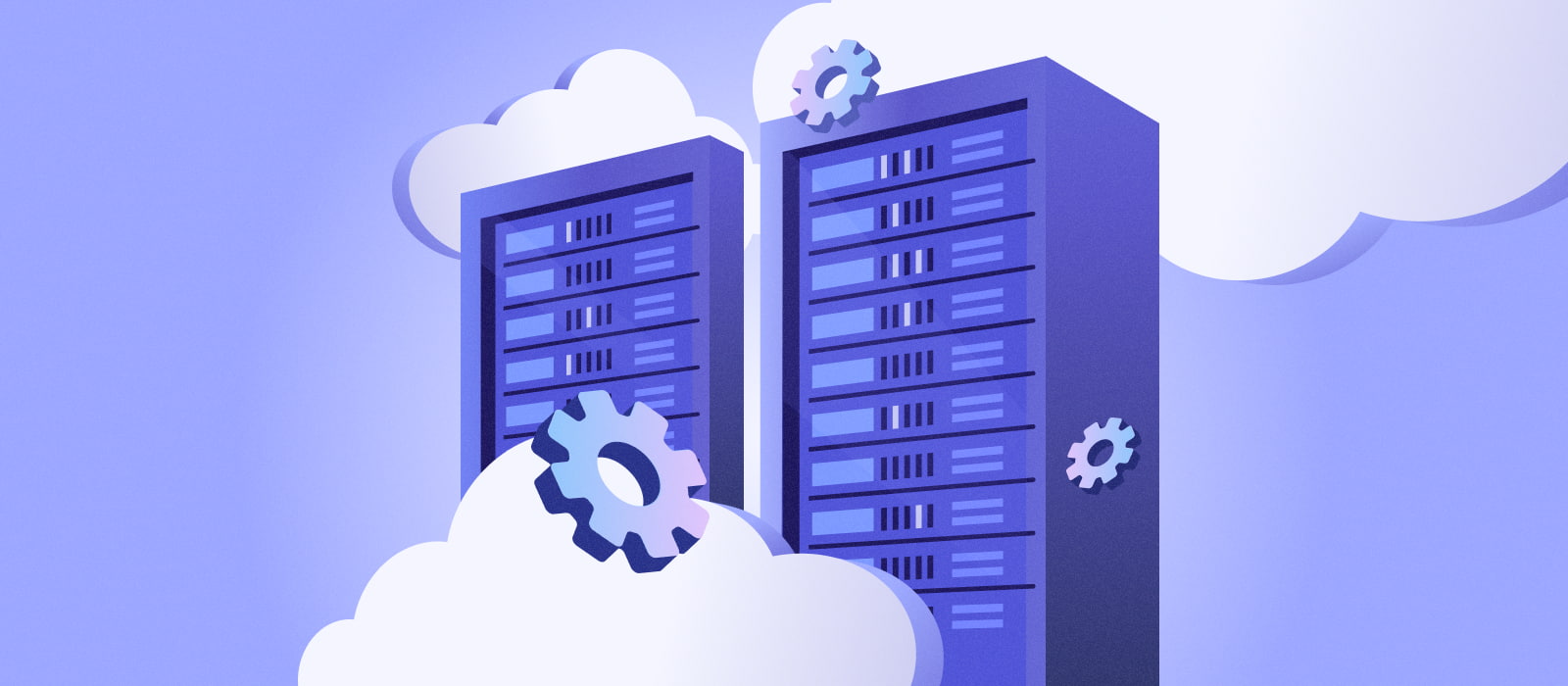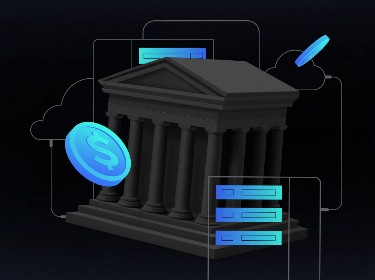Data is often housed in multiple disparate sources, making it difficult to derive valuable insights from this scattered information. However, by adopting appropriate data integration techniques, you can use your data to the fullest and drive strategic decision-making.
Data integration involves consolidating data from multiple different sources to provide a unified view, enable easier data analysis, and promote data consistency. As of today, there are various data integration techniques to choose from, each with its unique approach and benefits.
Read on to explore the most common data integration techniques and strategies. We will also provide you with vital tips on how to devise a robust data integration strategy that can seamlessly blend your data and turn it into valuable business insights.
Planning a new project? Contact our IT consultants and explore how we can help you realize your business idea
Top 8 data integration techniques and strategies
![]()
Discover eight of the most effective data integration techniques, including their strengths, weaknesses, and best application scenarios.
1. Manual data integration
The manual data integration technique requires data managers to handle all operations, from data collection and integration to retrieval and presentation, manually. This process involves crafting custom code to organize and integrate data.
The technique is characterized by a high degree of control and customization, making it adaptable to complex or unique business requirements. However, it demands careful attention to data quality and consistency, as any errors in the manual coding can lead to significant issues down the line.
Strengths:
- Cost efficient and allows for a quick start
- Can be easily customized to meet your specific data integration requirements
Weaknesses:
- Resource-intensive approach, often requiring substantial time investment and advanced programming skills
- Not suitable for large volumes of data or rapidly changing data sources due to its less scalable nature
Best suits for:
- Smaller scale projects or scenarios where custom handling of data is paramount
2. Common storage integration
Common data storage, often referred to as data warehousing, is a data integration technique, where information from various sources is collected, transformed, and stored in a unified, central location.
This data integration strategy ensures better data integrity, as all necessary information can be accessed from a single source. Consequently, you get a holistic view of business data and provide stakeholders with easy access to information for decision-making.
Strengths:
- Provides a consistent view of data, simplifying data management and analysis
- Ensures easy access to data for various decision-makers
Weaknesses:
- Time and resource intensive approach, particularly when dealing with large volumes of data
- High storage and maintenance costs
- Demands strict data quality control for maintaining data reliability
Best suits for:
- Businesses requiring a consolidated view of their data for easy access and analysis
- Scenarios where data from multiple sources needs to be stored and accessed in a single location
3. Application-based integration
The application-based technique of data integration facilitates data exchange between different software applications. It can be achieved in various ways, such as through APIs (application programming interfaces), web services, or message queues. In this method, the data can be transferred directly from one application to another.
This technique allows businesses to break down data silos and ensures that all applications use consistent and relevant data.
Strengths:
- Offers real-time data integration, ensuring all applications have access to the most recent data
- Provides a comprehensive view of integrated data and easy information exchange
Weaknesses:
- Requires careful management to ensure data security during the exchange
- Demands substantial technical expertise for the setup and management of the integrations
Best suits for:
- Businesses with multiple software applications that need data sharing and synchronization
- Scenarios requiring real-time or near-real-time data integration
4. Middleware data integration
Using middleware applications is considered to be one of the most common techniques for data integration. The middleware serves as an intermediary that translates and routes data between systems, thereby simplifying the process of integration and making it more efficient.
Commonly utilized methods of middleware data integration include message-oriented middleware (MOM), service-oriented architecture (SOA), enterprise service bus (ESB), the process of extracting, transforming, and loading (ETL), as well as application programming interfaces (APIs).
Strengths:
- Facilitates seamless data flow across heterogeneous systems
- Ensures easier data access between multiple systems
Weaknesses:
- Requires expert knowledge for setup, customization, and maintenance
- The selection of appropriate middleware to meet specific business needs can be complex and time-consuming
Best suits for:
- Businesses with diverse systems or applications requiring efficient communication and data exchange
- Scenarios where multiple source systems need to interact frequently or in real-time
- Scenarios where integration of legacy systems with newer ones is required
Explore the key differences between Power BI and Tableau, the market leaders in data analytics, to find out which best suits your business needs
5. Data consolidation
Data consolidation involves the creation of a centralized repository by combining data from various sources and transforming it to achieve data integrity. The resulting repository serves various scenarios, from reporting to being a data source for downstream applications.
Unlike other data integration techniques, this approach prioritizes data latency, which is the time required to retrieve and transfer data from various sources to a single data repository. This time factor influences the freshness and relevance of the data available for business intelligence and data analytics services.
Strengths:
- Creates a consistent data format, making data management more effective
- Can help lower data storage costs
Weaknesses:
- Can be time-consuming and resources-intensive, particularly for large volumes of data
Best suits for:
- Businesses looking to reduce storage costs
- Scenarios that require a reduction of data redundancy and inconsistency
6. Data federation
Also known as data virtualization, this data integration technique combines varied data sets with different models into a single virtual database featuring a unified data model.
In contrast to real-time data integration, where data is continuously combined into a centralized storage, no actual data movement occurs in a federated virtual database. Instead, data is served on a on-demand basis, when users need to retrieve specific information.
Strengths:
- Reduces the need for additional data storage
- A cost-efficient approach
Weaknesses:
- Can be challenging to set up and manage due to the virtual nature of integration
Best suits for:
- Scenarios where data needs to be accessed and analyzed in its original form without being moved or transformed
Want to enable analytics-driven decision-making? Check out our business intelligence services
7. Data propagation
This data integration approach involves the transfer of data from a central enterprise data warehouse to various data marts, with necessary transformations being applied. As the data in the warehouse is continuously updated, these modifications are propagated to the original data mart either synchronously or asynchronously.
Enterprise application integration and enterprise data replication are the two common data integration strategies used for data propagation.
Strengths:
- Facilitates real-time or near-real-time data synchronization, ensuring all systems have access to the most recent data
- Ensures data consistency across different systems by automatically propagating data changes
Weaknesses:
- Can be resource-intensive, particularly when dealing with large data volumes or rapidly changing data sources
Best suits for:
- Businesses requiring real-time or near-real-time data synchronization across multiple heterogeneous systems
- Scenarios where data changes occur frequently and need to be reflected across different systems promptly
8. Extract, Transform, Load
Extract, Transform, Load (ETL) is one of the most widely used data integration techniques. It involves extracting data from multiple sources, transforming it (cleansing, enriching, standardizing, etc.) to meet the business needs, and loading it into a data warehouse for analysis.
This structured process guarantees that businesses have consistent, accurate, and reliable data. However, it’s crucial to note that this approach typically involves batch processing, which means it may not be suitable for real-time data integration needs.
Strengths:
- Ensures data consistency and reliability
- Allows for comprehensive data transformations to meet specific business needs
- Effective for managing large and complex datasets
- Provides flexible data storage options, enabling data integration into various storages
Weaknesses:
- Resource-intensive and time-consuming data integration approach, particularly for large data sets
- Not suitable for real-time data integration
Best suits for:
- Businesses that need to perform complex transformations on their data before analysis
- Scenarios where data is extracted from various sources and integrated into a data warehouse for further analysis
Discover how to effectively leverage data analytics for risk management
How to create data integration strategy for your business
Most businesses deal with multiple complex systems and applications. To connect these systems effectively, you need to craft a comprehensive integration strategy that must span several crucial steps, from choosing between multiple data integration approaches to deciding on data governance procedures.
Let’s explore the essential steps you should undertake to formulate an efficient data integration strategy.
![]()
Step 1. Define requirements and identify your data sources
First of all, you need to determine what you need your data for. Are you looking to generate comprehensive reports or is your aim to facilitate data sharing across multiple departments? Your defined goals will provide direction to your strategy and aid in selecting the most fitting data integration techniques.
Next, you need to identify where your data is coming from. This could encompass various sources, including databases, applications, APIs, or even unstructured data like emails or documents.
Step 2. Choose integration approach and select data integration tools
With multiple data integration techniques and approaches available, it’s crucial to conduct a thorough analysis of each option, selecting the one that best aligns with your specific business requirements.
Based on your chosen approach, select the right data integration tools that will streamline the integration process. Consider factors such as cost, scalability, ease-of-use, portability, and the level of support provided by the vendor.
Some of the most widely used data integration tools on the market include Informatica PowerCenter, IBM InfoSphere, Talend, Oracle Data Integrator, and Microsoft SQL Server Integration Services.
Step 3. Design your data integration architecture
Start by mapping out the overall blueprint of your data landscape. This includes understanding and defining the data flows between different systems, as well as considering the movement of your data. For example, this could be a batch process where data is moved at specific intervals, or it could be a real-time stream with continuous data updates.
Next, define your data pipelines. Decide if they will be unidirectional, signifying a one-way flow, or bidirectional, meaning a two-way flow. Also, determine the frequency of data updates.
Finally, it’s crucial to specify the data transformations necessary to make the data useful for your specific objectives. You will also need to establish data quality procedures and metrics, including aspects such as data accuracy, completeness, and consistency.
Contact our team if you need assistance in organizing and visualizing your business data
Step 4. Establish data governance procedures
By establishing robust data governance procedures, you can guarantee transparency, accountability, and reliability of your data. This, in turn, leads to better insights and data-driven decision-making.
Begin by clearly identifying roles and responsibilities. Ask yourself the following questions: Who are the data owners? Who will have the authority to access and modify the data? Who will be accountable for maintaining data quality and security?
Following that, establish data management standards. This entails determining how data will be classified, labeled, stored, and deleted.
Additionally, you should establish procedures for maintaining data quality, including methods for measuring metrics and quality indicators. It’s also essential to formulate policies that ensure data security and compliance. Develop guidelines that will protect your data against breaches and loss, which may include data encryption protocols, regular backups, and access control.
Step 5. Implement, monitor, and optimize your strategy
Once everything is planned and ready, you can commence the actual implementation process. This entails deploying the selected data integration techniques, setting up and configuring data pipelines to facilitate seamless data integration, and initializing the data flows for streamlined intercommunication among different data sources and platforms.
After implementation, continuously monitor your system’s performance and make necessary adjustments. Keep an eye on data quality, and ensure the system is meeting your business needs.
Also, remember that data integration strategy is not a one-time event. It’s an ongoing process that should be continually adjusted in line with performance outcomes and evolving business needs.
Discover how we've engineered a data-centric solution to protect user data in the web3 environment
Closing thoughts
From manual data integration to data consolidation, propagation and beyond, there are a plethora of data integration techniques designed to meet your diverse business requirements. The key is to understand your specific business needs and data usage scenarios.
However, the journey doesn’t stop at simply choosing an appropriate data integration technique. This selection is just the first step in the larger, critical process of developing a robust data integration strategy. At this point of your journey, PixelPlex big data consultants can be of great assistance.
With 16 years of industry experience, a diverse skillset, and versatile expertise, we can guide you through every stage, from the selection of the most suitable data integration technique to the development of data marts.
We can also assist with custom software development, creating a data management solution that perfectly aligns with your unique business needs and goals.




